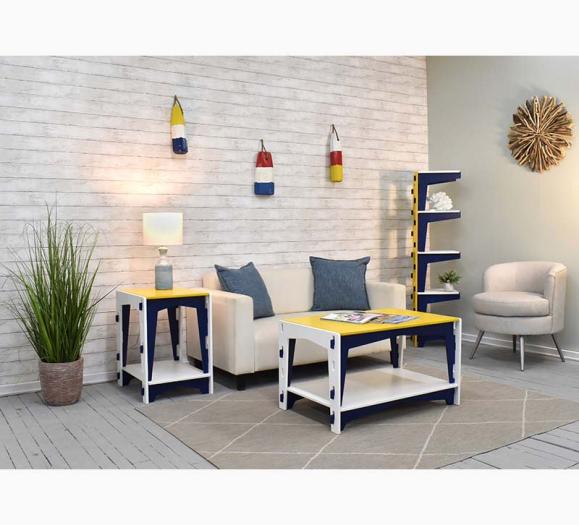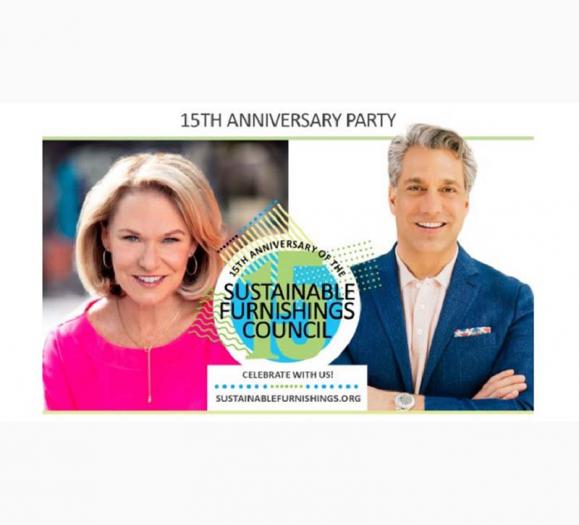“What’s it Made of?” Initiative
The Sustainable Furnishings Council (SFC) has joined together with partners American Sustainable Business Council, Center for Environmental Health, Healthy Materials Lab at Parsons School of Design and others for an initiative called “What’s it Made of?”
SFC aims to encourage transparency in the furniture industry’s supply chains and to stimulate innovation to reduce harmful chemical inputs to the manufacture of furnishings. Leading businesses are seeking to capture emerging market opportunities by redesigning their products and catalyzing change in their supply chains. SFC realizes that this is a multistage process and is committed to supporting businesses in improving their supply chains and to being useful to consumers seeking more environmentally safe furnishings.
SFC has invited industry members to join in this effort, starting with signing the pledge to ask “What’s it made of?” whenever they are shopping for furnishings products and materials.
“As a business leader I am concerned about the health of our world — my employees, customers, communities and the global environment. I am committed to reducing the use of chemicals that pose harm to human health and the environment. As a first step, I commit to ask my suppliers about the presence of the following chemicals of concern in the products that we produce, specify or purchase: flame-retardant chemicals, fluorinated stain treatments, antimicrobials, vinyl and Volatile Organic Compounds (VOCs), including formaldehyde.”
Once you’ve you taken the pledge, you can send your suppliers to the Supply Chain Questionnaire SFC has prepared. It will help you understand what they are providing, and it will help them disclose ingredients systematically.
A Retailer’s Perspective
Showrooms are an integral part of SFC, and they can make a huge difference in promoting change in this industry’s supply chain.
Belfort Furniture in Dulles, VA, joined SFC in 2013. According to Matt Huber, Executive Vice President, Belfort already had initiatives related to local sourcing of products, reducing waste, investing in efficiency and even planting a tree for every delivery made, so when staff learned more about the SFC and saw that a number of its manufacturer partners were members, they wanted to join. Below, Huber tells us more.
1) How is sustainability engrained in your business, and why is it important?
Selling a wide range of furniture, we know that our customers prefer more environmentally responsible choices when they are available. Right now, more sustainable options are more readily available at the higher end than in the mainstream market. But we have all seen how quickly organic food went from being confined to health food stores, then to special sections of the supermarket to now having those options available on the same shelves right next to the “conventional” goods — and often at very little price premium. Belfort wants to help make that happen in the home furnishings industry. Furnishings are a long-lasting product that you will be interacting with every single day — so making the best decision for the long-term quality of your home, community and the globe is critical.
2) How do you communicate sustainability to your customers, and do you find that they’re receptive and interested?
Belfort has a very large display with products that are diverse in style and prices, so there are always many different messages that we are trying to tell. Highlighting sustainable features is important to us as a company, but a customer has to love the style and the price before wanting to hear about the low-VOC finish or locally-sourced wood features. We are always searching for products that offer the irresistible combination of style, affordability and responsibility.
We find that the two most compelling features of sustainable furniture to our customers are local manufacturing and reduced off-gassing of chemicals. People know that local production means less impact from transportation, more investment in the region and often better quality of materials used. Low or no off-gassing of VOCs has also become more important in the market with certifications like Greenguard, allowing consumers to be sure that they are bringing safer products into their homes. We first saw this demand in the youth furniture category, as new parents started to research online and came in looking for Greenguard certified options. The demand has only grown in recent years, and we are starting to see more suppliers offer collections designed with low VOCs.
3) What ways do you use merchandising or marketing to communicate the importance of sustainability in your store?
Belfort uses hang tags to identify the merchandise produced by the exemplary members of the SFC. This offers a third-party verification to the claims made by these manufacturers. Beyond that, we also highlight information regarding wood sourcing and manufacturing practices for other collections with sustainable features. These days you can find collections that are laminates printed to look like reclaimed wood, so when a collection is designed around truly sustainable materials, it is important to tell that story and explain how it is different — not just a design element or a choice of stain.
4) What do you view as the biggest challenge or roadblock to more widespread adoption of sustainable products or practices in the home furnishings industry?
Overall, the furniture industry is not transparent about the supply chain or material sources. While construction may be listed in a “features and benefits” sheet, the details about location of manufacturing, source of raw materials and types of finish used, are hard to track down — and often require compiling information from several continents. That is why I am excited by the “What’s It Made Of?” initiative that the SFC is working on. It asks suppliers to provide information regarding five of the top chemicals of concern for human and environmental health. The goal over the long term is to reduce and eventually eliminate these products from the supply chain. It will be a long process, but an important one.
Questions to Ask, Answers to Look for When Buying Furniture
If you’re a retailer who needs some guidance on how to introduce more sustainable products into your inventory, SFC’s quick guide will steer you in the right direction.
Where does the wood come from that was used in this furniture?
The most important consideration in wood procurement is to ensure that the wood was legally harvested from responsibly managed forests. Look for certified-, reclaimed-, North American-, or plantation-grown woods.
Is the wood third-party certified?
Look for legitimate third-party certifications that have high standards and the ability to monitor performance. Some examples include Forest Stewardship Council (FSC) — the gold standard in wood certification — and in North America, Sustainable Forestry Initiative (SFI).
Does this manufacturer have a Social Equity Code of Conduct for their production processes?
A Social Equity Code of Conduct is a good assurance that workers are fairly treated, receive decent wages and work in a safe environment. Every manufacturer should be able to provide a written code of conduct.
Does this manufacturer have an energy use reduction plan?
The production of electricity is the single largest contributor to CO2 emissions worldwide. Companies with an energy use reduction plan are a significant part of the solution.
Where was this furniture manufactured?
Transportation is the second major contributor to greenhouse gases. Look for furniture that was produced closest to where you live and uses raw materials sourced within a 500 mile radius of their manufacturing facilities. Buying local will cut emissions and support local economies.
What about fire retardants in foam, including mattresses?
Until recently, most of the foam products in our homes were required by law to be treated with fire retardants, most of which are toxic chemicals linked to cancer, neurological deficits, developmental problems and impaired fertility. There are non-toxic alternative ways of ensuring a product is fire-safe and also healthy for the home. Check the label on upholstered furniture for assurance that it does not contain chemical fire retardants.
Were paints or finishes with high VOCs used on this product?
VOCs are harmful pollutants from certain finishes that are released during the manufacturing process and into the home. Look for low or no VOC finishes, many of which will be water-based.
What about leather?
Leather is often produced in a very toxic process using quantities of water and many chemicals, including heavy metals like chromium salts that often pollute waterways. Leather products often have a very large transportation footprint. The leather may come from South America. The final tanning may be done in Europe, and the manufacturing may be in Asia, all for consumption in North America. That said, leather does last a very long time, and durability is an important attribute for sustainability.
What about textiles?
Textile production accounts for more toxic waste pollution of water than any other industry. Toxic chemicals are used in growing the natural fiber or creating the synthetic fiber, in processing it into thread, in making the fabric and in finishing the cloth. You can reduce the amount of toxic chemical input by choosing organically grown natural fibers and by looking for the GOTS and OekoTex certifications of safe manufacturing.







